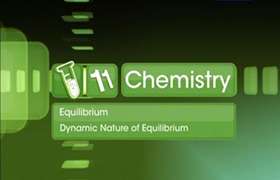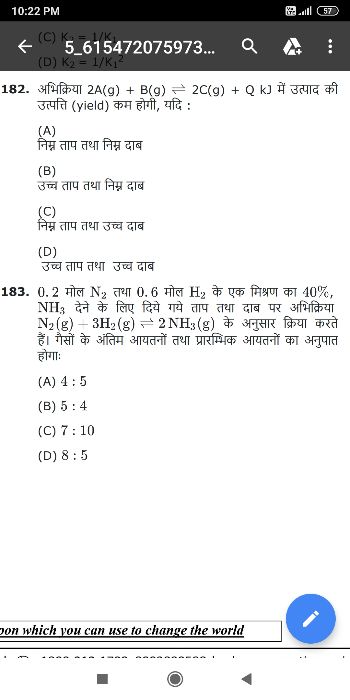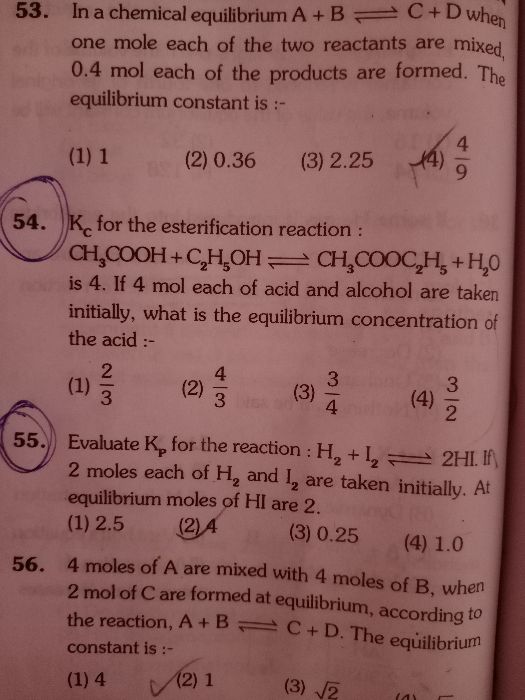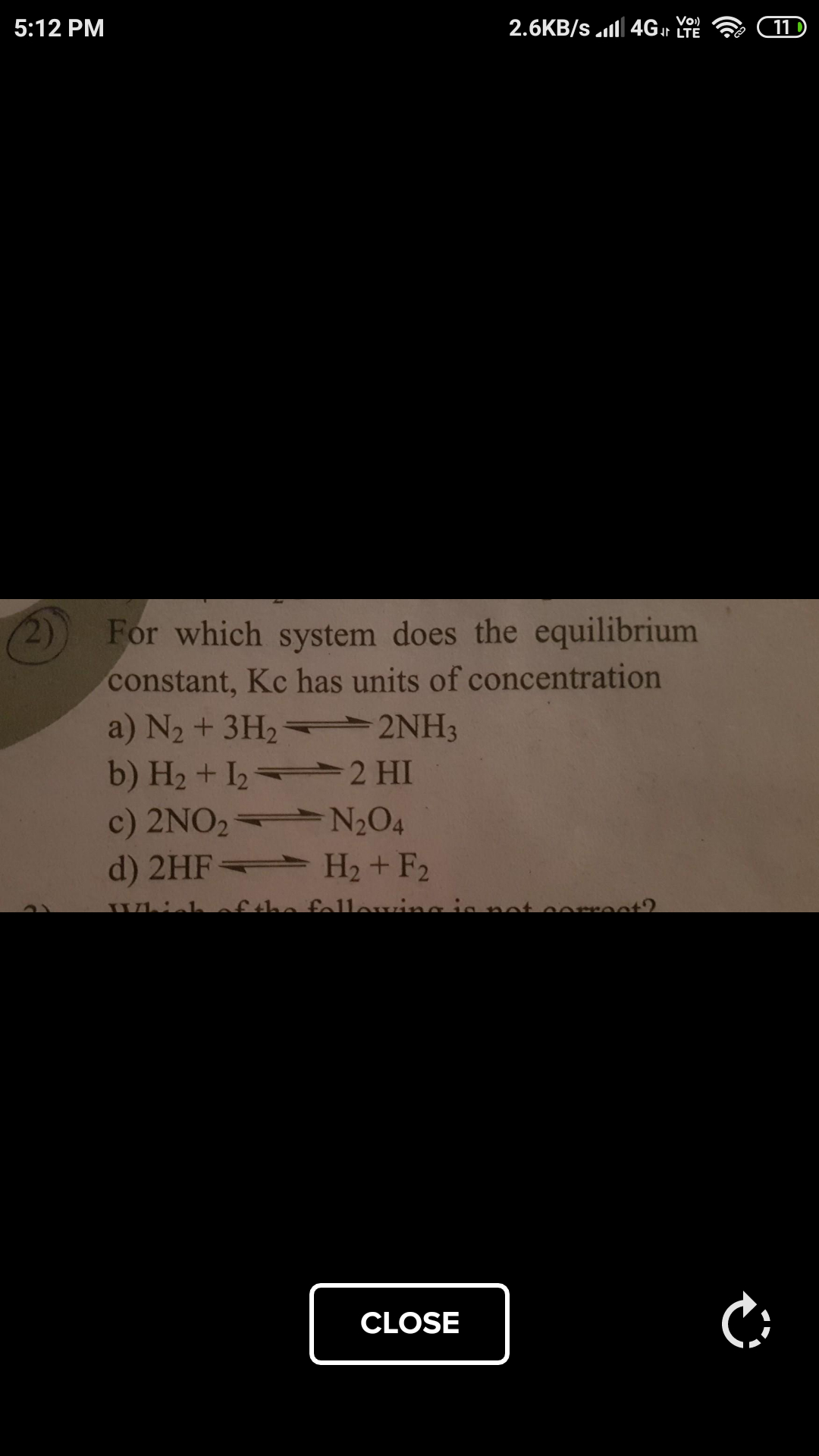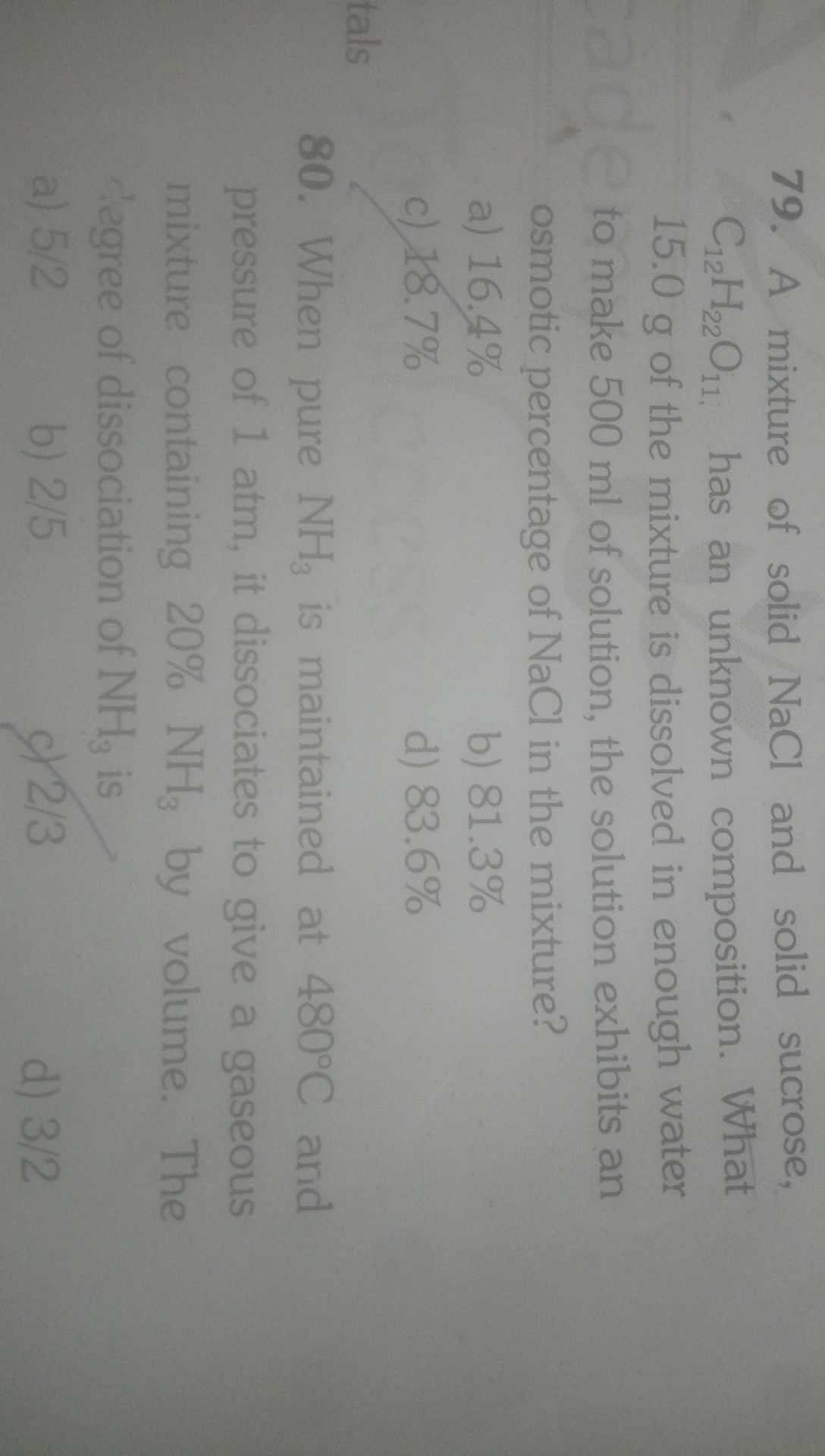CBSE Class 11-science Answered
State and explain the law of mass action.
Asked by Topperlearning User | 24 Apr, 2015, 02:48: PM
The law of mass action is defined as at constant temperature , the rate of a forward reaction is directly proportional to the product of the molar concentration of the reactants each raised to a power equal to its stoichiometric coefficient that appear in the balanced chemical equation.
For example , consider the following general reaction;
aA + bB → Products
Hence, according to the law, rate of reaction = k [A]a [B]b, where 'a' and 'b' represents the stoichiometric coefficient of reactants A and B respectively and k is the rate constant.
Answered by | 24 Apr, 2015, 04:48: PM
Concept Videos
CBSE 11-science - Chemistry
Asked by gouravvv641 | 16 Aug, 2022, 09:25: PM
CBSE 11-science - Chemistry
Asked by mangalchandrj79 | 21 May, 2022, 04:38: PM
CBSE 11-science - Chemistry
Asked by veenatripathi | 28 May, 2020, 09:03: AM
CBSE 11-science - Chemistry
Asked by ABHILASHA | 24 Oct, 2019, 06:27: AM
CBSE 11-science - Chemistry
Asked by tanuj2808 | 25 Sep, 2019, 10:18: AM
CBSE 11-science - Chemistry
Asked by jhajuhi19 | 02 Jun, 2019, 11:55: PM
CBSE 11-science - Chemistry
Asked by ntg432000 | 26 Apr, 2019, 04:31: PM
CBSE 11-science - Chemistry
Asked by Topperlearning User | 24 Apr, 2015, 01:55: PM
CBSE 11-science - Chemistry
Asked by Topperlearning User | 24 Apr, 2015, 02:07: PM
CBSE 11-science - Chemistry
Asked by Topperlearning User | 24 Apr, 2015, 02:31: PM

